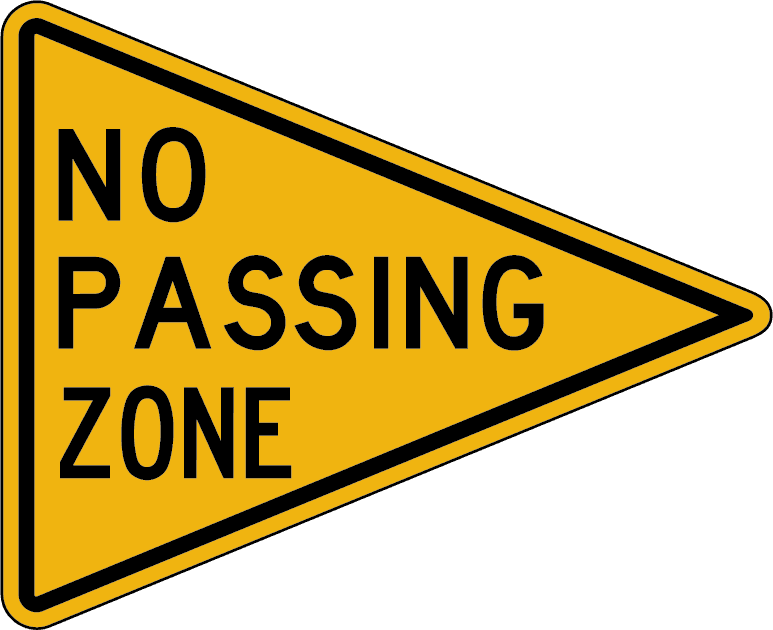What is Pennant Sign in the USA? Discover the importance of Pennant signs in the USA, including their meaning, quiz, definition, and purpose. Learn how these unique triangular signs help maintain road safety by indicating no-passing zones for drivers. These signs play a crucial role in ensuring road safety and effective traffic management by warning drivers of specific conditions or restrictions.
Pennant Sign
A Pennant Shape Traffic Sign is a triangular-shaped, yellow sign with black text or symbols, strategically placed at the beginning of a no-passing zone. Its purpose is to warn drivers not to pass other vehicles in the designated area, as it may be unsafe due to limited visibility or hazardous road conditions.
| Sign 1 | Sign 2 |
 |
 |
| No Passing Zone | Pennant Sign |
Meaning:
The Pennant sign is used to inform drivers of an upcoming no-passing zone. This zone indicates that it is unsafe and prohibited to pass other vehicles due to limited visibility or hazardous road conditions.
Definition:
A Pennant sign is a traffic control device that signals the beginning of a no-passing zone. It is designed to help drivers recognize and adhere to the restrictions on passing other vehicles, thus reducing the risk of head-on collisions and other accidents caused by unsafe passing maneuvers.
Example:
If you’re driving on a two-lane highway with a solid yellow line marking the center, you may see a Pennant sign placed on the left side of the road, indicating the beginning of a no-passing zone. This sign serves as a reminder that passing other vehicles is not allowed in this area due to safety concerns.
Shape:
The Pennant sign in the USA is characterized by its unique, triangular shape, which resembles a pennant flag. This shape sets it apart from other traffic signs and ensures that drivers can easily recognize its purpose.
Location:
They are typically installed on the left side of the road, facing oncoming traffic. They are placed at the beginning of a no-passing zone, which is often marked by a solid yellow line or double yellow lines on the pavement.
Color:
The Pennant sign features a yellow background, making it highly visible to drivers. The border and the text or symbols on the sign are typically black, providing a clear contrast against the yellow background for better readability.
Quiz
Important points to remember
When encountering a Pennant sign, keep these important points in mind to ensure a safe and responsible driving experience:
- Recognize the sign: Be familiar with the unique triangular shape and yellow color of the Pennant sign to easily identify it as a no-passing zone indicator.
- Observe road markings: Pay attention to the solid yellow or double yellow lines on the pavement, as they reinforce the no-passing zone indicated by the Pennant sign.
- Heed the warning: Respect the no-passing zone by refraining from attempting to pass other vehicles within the designated area. This will help prevent head-on collisions and other accidents resulting from unsafe passing maneuvers.
- Stay alert: Maintain awareness of your surroundings and any changes in road conditions, visibility, or traffic flow that may impact the safety of passing maneuvers.
- Be patient: Even if you’re in a hurry or feel frustrated with the speed of the vehicle in front of you, it’s essential to respect the no-passing zone and wait for a safe opportunity to pass outside of the restricted area.
- Know the rules: Familiarize yourself with local traffic regulations and penalties associated with passing in a no-passing zone to avoid potential legal consequences.
- Share the road: Be considerate of other drivers, including slower-moving vehicles and motorcycles, by adhering to the no-passing zone restrictions indicated by the Pennant sign.
DMV Road Sign/Traffic Signal Practice Test